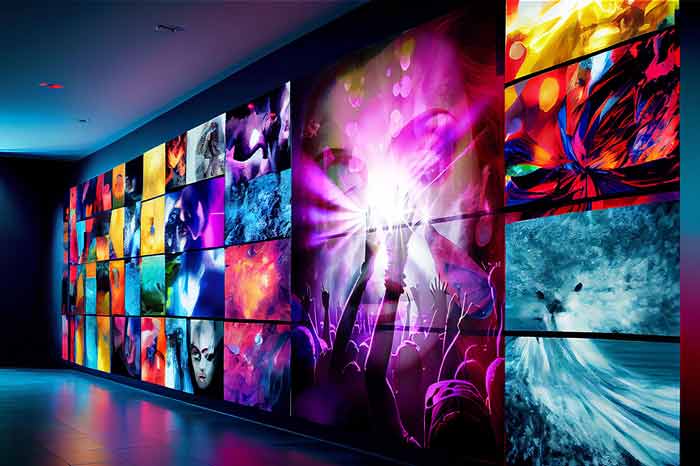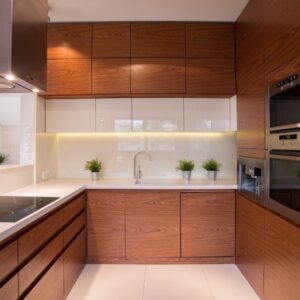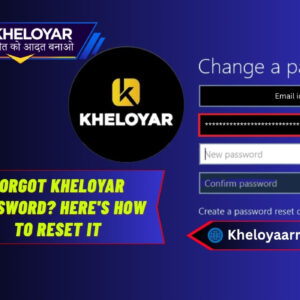In today’s visually driven world, an LED display is often the face of a brand. Whether installed in a retail lobby, used as a large outdoor billboard, or deployed for live events, the quality of the LED screen reflects directly on the brand’s credibility. But not all LED screen manufacturers are created equal. If you are evaluating suppliers, here are the crucial factors that separate a top-tier LED Screen Manufacturer from the rest.
1. Rigorous Quality Control and Component Selection
A genuinely professional LED screen manufacturer enforces strict quality control across every production stage. This begins with the selection of components — LED chips, driver ICs, power supply modules, PCBA, connectors, and structural frames. The best manufacturers partner with trusted component brands to reduce the risks of early failures.
Throughout assembly, multiple inspection points (incoming inspection, in-process inspection, burn-in testing, aging tests) must be used. High-end manufacturers run 72-hour burn-in cycles under full load to reveal latent defects before shipping. They also monitor for brightness uniformity, color consistency, and thermal behavior across modules.
Without robust QC, you risk discontinuities in display, dead pixels, color shifts, or module failures after deployment — all of which damage reputation and cost more to rectify.

2. Design Capability & R&D Innovation
If a manufacturer is only doing “copy & paste” designs, you risk being constrained by limited options. The best LED Screen Manufacturer invests heavily in R&D to offer innovation:
- Fine-pitch, high-resolution designs for close-distance viewing
- Modular, tool-less assembly systems for fast installation and servicing
- Energy-saving architectures (common cathode, efficient PSUs, intelligent dimming)
- Intelligent and networked control systems (remote diagnostics, IoT integration)
- Curved, transparent, flexible, or creative-shape LED panels
Manufacturers that stay current with emerging technologies (mini/micro-LED, improved driver ICs, adaptive brightness) deliver displays that stay future-proof.
3. Customization & Flexibility
One size rarely fits all. A top-tier LED screen manufacturer should be able to tailor dimensions, pixel pitch, curvature, mounting structure, brightness range, and control options to your unique project.
For example, indoor retail signage may need ultra-fine pixel pitch (e.g., P1.5 or P1.9) with lower brightness, while large outdoor façades demand P6–P10 pitch with weatherproof housing and high brightness. A good manufacturer will guide you in choosing the optimal specs, not force you into a pre-defined product line.
Flexibility also extends to software integration — your screen might be part of a larger control system, or need to display dynamic content across multiple screens. The manufacturer should support system interoperability and integration.
4. Durability, Reliability & Environmental Resistance
An LED screen is often exposed to harsh conditions — heat, humidity, dust, vibrations, and sometimes extreme weather. A high-quality LED display must be mechanically robust and reliably sealed.
Important durability features include:
- IP ratings (e.g. IP65 / IP67) for outdoor modules
- High-quality corrosion-resistant coatings and materials
- Vibration-resistant modular locks and mounting systems
- Effective thermal management (ventilation, heat sinks, airflow channels)
- Redundancy in power and signal lines in critical applications
A dependable LED Screen Manufacturer will also provide Mean Time Between Failures (MTBF) data, warranty coverage, and acceptable defect rates, giving you confidence in long-term performance.
5. Performance Metrics: Brightness, Contrast, Color Accuracy & Refresh Rate
Measurable metrics define a display’s visual quality. A top LED screen manufacturer will publish and guarantee performance data. Key metrics include:
- Brightness (nits or cd/m²): Indoor displays often require 800–1,500 nits; outdoor displays can exceed 5,000–7,000 nits.
- Contrast ratio: High contrast ensures deeper blacks and more vivid colors.
- Color accuracy & uniformity: Across modules, color and brightness should match — no visible seams or shading.
- Gray scale & bit depth: High-end displays will support high gray scale levels (10–14 bit) so transitions are smooth.
- Refresh rate/scanning frequency: Especially critical for video and live content. A good display must maintain 1920 Hz or higher (or equivalent scanning) so the image is stable and flicker-free even under camera capture.
You should request sample performance curves, and if possible, visit a live demo to inspect image uniformity and motion clarity.
6. After-Sales Service, Support & Warranty
Even the best hardware can need servicing or adjustments. The difference between a mediocre supplier and a trusted LED Screen Manufacturer lies in support. Essential offerings include:
- Clear warranty terms (duration, coverage, parts vs labor)
- Spare parts availability for modules, power supplies, and control cards
- Field service support or certified local partners
- Remote diagnostics and real-time monitoring tools
- Training for your maintenance staff
Prompt replacement of failed modules or components, and good spare inventory, ensures your display is rarely offline.
7. Proven Track Record & Project Portfolio
A credible LED screen manufacturer should have a robust portfolio of completed projects — ideally including installations in environments similar to your intended use (stadiums, retail, façade, events).
Ask for references, site visits, case studies, and performance data after months/years in operation. Handling scale, long-distance shipping, customs, and installation logistics for global clients shows maturity.
Also, look out for accreditations, certifications (ISO, UL, CE), third-party lab tests, and industry awards. These enhance confidence in the manufacturer’s claims.
8. Supply Chain Integration & Manufacturing Scale
A manufacturer’s internal capabilities matter. Suppose they are vertically integrated (i.e., they assemble PCBA, modules, and frames in-house) and manage their supply chain well. In that case, they are less vulnerable to component shortages, quality inconsistency, and delays.
Large-scale manufacturing with consistent processes (e.g., SMT, pick-and-place, automated optical inspection) ensures consistent quality. It also gives them buying leverage to source premium components, which trickles down into better reliability and cost efficiency.
9. Cost Structure, Transparency & Total Cost of Ownership
While cost is a factor, the lowest bid is not always the best choice. A high-quality LED screen manufacturer will offer transparent pricing (component costs, labor, shipping, installation) and help you estimate the total cost of ownership (power usage, maintenance, replacement parts) over the expected lifespan.
Sometimes paying more upfront for better-quality components saves you in energy bills, fewer replacements, and less downtime in the long run.
Conclusion
Selecting the right LED Screen Manufacturer is not merely about finding a vendor — it’s about choosing a partner. The highest-quality manufacturers combine rigorous quality control, deep R&D, customization ability, robust durability, proven performance metrics, and excellent after-sales support.
By examining their project track record, supply chain, transparency in pricing, and warranty policies, you can gauge whether they truly deliver what they promise.
When your LED display goes live — be it in a retail space, stadium, façade, or broadcast studio — it will stand (or fall) based on the choices you made during procurement. With a reliable LED screen manufacturer, you ensure your visual communication remains vibrant, stable, and striking year after year — giving your audience the experience you intended and protecting your investment.




